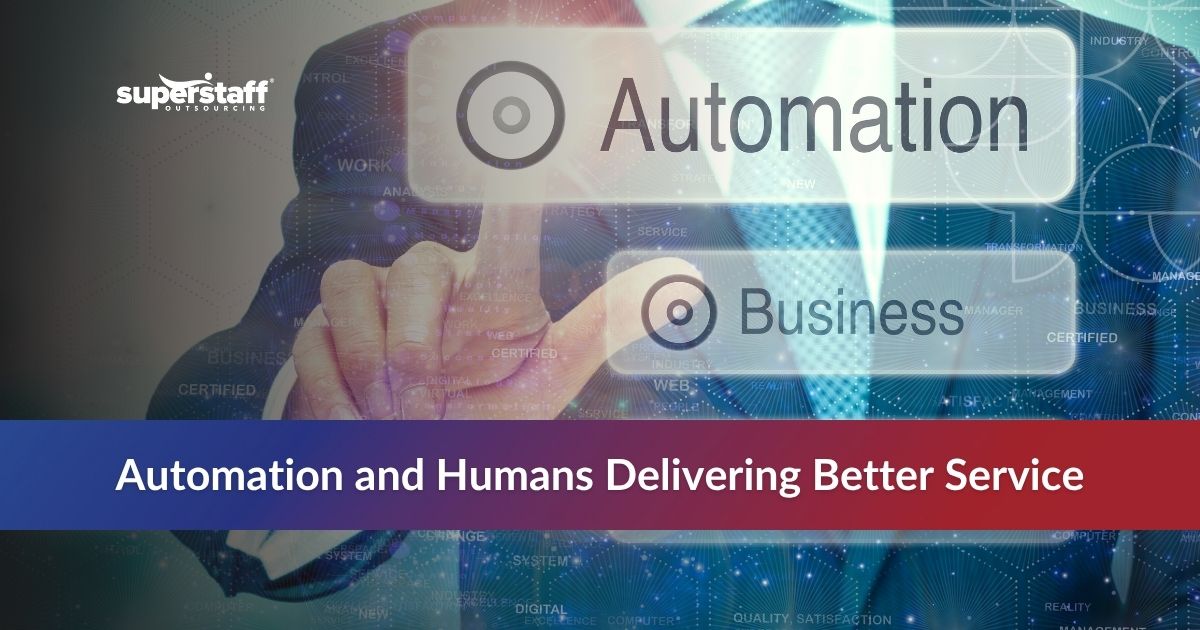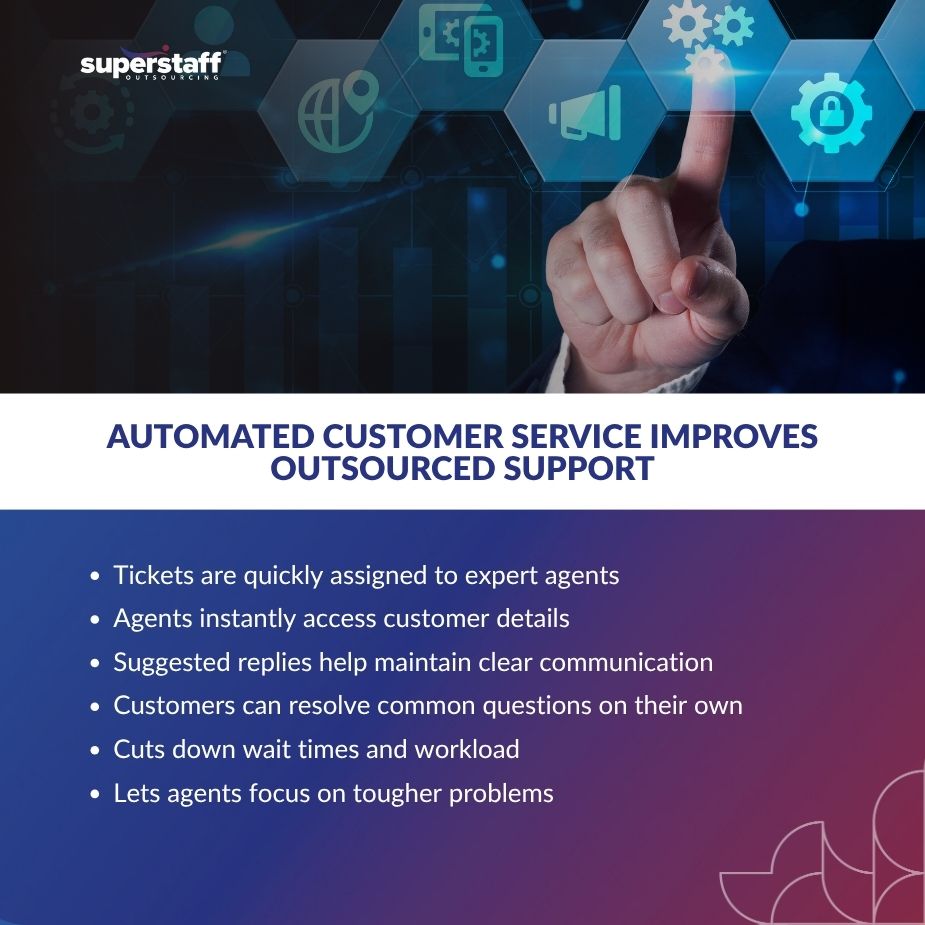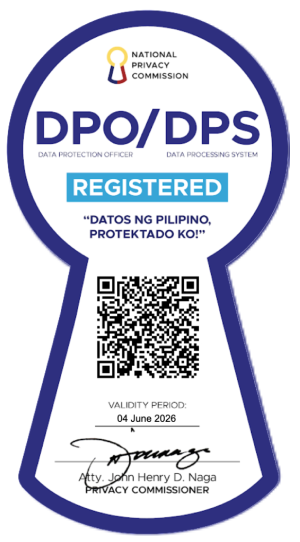
Customer service once meant sticking to strict scripts and enduring long hold times. Now, customers expect faster, smarter help at every turn. To keep up, many businesses are adopting automated customer service tools that handle routine tasks, freeing human agents to tackle the tough problems that need a personal touch.
Automation isn’t about replacing people—it’s about equipping them with better tools to serve customers more effectively. By blending technology with human skill, companies speed up responses, cut down errors, and deliver reliable support every time.
Here’s a look at how new tools are changing outsourced customer service, the benefits they provide, and how they support both customers and the people who help them.
Why Traditional Customer Service Models Are No Longer Effective
In the past, customer service relied heavily on scripted replies and simple call routing systems. This one-size-fits-all approach no longer satisfies modern customer expectations, which demand speed, convenience, and personal attention.
-
Customers Expect Faster Service
Today’s customers are used to instant access to information, and they expect the same speed from customer support. Long wait times and complicated phone systems often push customers away instead of helping them.
-
Personalization Matters
People don’t want to feel like just another number in a queue. When businesses offer responses that show an understanding of the customer’s unique issue, it builds trust and improves satisfaction. Studies show that about 7 out of 10 people want personalized help, and most get frustrated when they don’t get it. Also, more than half of the customers are willing to pay more for a service that feels personal. Giving this kind of care helps customers trust the company and keeps them coming back.
-
Manual Processes Are Slow
When service reps handle everything manually—like typing out notes, sorting tickets, or digging through records—it slows everything down. This not only delays responses but also increases the risk of human error.
-
Why Businesses Are Shifting to Automated Customer Service
Automated support tools help companies respond faster, reduce mistakes, and give more personalized help. By removing repetitive tasks and focusing on meaningful interactions, businesses can keep up with rising customer expectations.
Automated customer service addresses these issues by streamlining processes and providing more tailored support.
How Automation Enhances Outsourced Customer Support

Outsourcing partners are now using automation to improve service quality and efficiency. These tools help streamline support processes, reduce handling time, and improve customer experience.
-
Automated Ticket Routing
Systems can automatically direct customer inquiries to the appropriate agent, reducing wait times. This ensures each issue is handled by someone with the right expertise from the start.
-
Pre-Filled Forms and Data Lookup
Agents have access to customer information instantly, speeding up interactions. With less time spent gathering data, they can focus on resolving the issue more effectively.
-
Response Suggestions
Tools provide agents with suggested replies based on common issues, ensuring consistency. This helps maintain a professional tone and reduces the chance of misinformation.
-
Self-Service Options
Customers can find answers to routine questions through automated systems without needing to speak to an agent. This reduces the number of incoming tickets and empowers users to solve simple problems on their own.
Balancing Automation with Human Interaction
Automated customer service aims to support—not replace—human agents. Automation helps by handling repetitive and time-consuming tasks such as data entry, ticket routing, and answering frequently asked questions. This allows human agents to focus their attention on complex or sensitive issues that need empathy, creative problem-solving, or a personal touch—skills that automation alone cannot replicate. With this setup, businesses can provide more meaningful and efficient customer interactions without overwhelming their support teams.
To enhance this collaboration, advanced tools are used to guide and assist agents in real time:
- Guided Workflows – These step-by-step processes help agents stay consistent in their responses, follow proper procedures, and comply with company or industry standards.
- Real-Time Coaching – Agents receive instant tips, reminders, or suggestions during customer interactions to help them communicate more effectively and avoid common mistakes.
- Performance Support – Automation can track customer sentiment and flag when an interaction may need escalation, ensuring the right support is given at the right time.
By blending automation with human oversight, companies improve response times, reduce errors, and deliver a more satisfying and personalized customer experience.
Who Benefits from Automation-Enhanced Outsourcing
Not every business requires full automation, but many gain significant advantages by adding automated customer service elements to their operations. Automation can be adapted to fit different sizes and types of customer support needs.
-
High-Volume Support Teams
Teams that handle large numbers of repetitive inquiries find automation helpful in managing workload and reducing agent burnout. Automated responses and routing free up agents to focus on more complex cases.
-
Expanding Businesses
Companies growing into new markets or serving customers across different time zones can maintain consistent service quality without needing to hire extra staff immediately. Automation helps bridge these gaps by providing round-the-clock support.
-
Compliance-Focused Organizations
For businesses that must follow strict regulations, automation ensures every customer interaction follows required protocols. This reduces risk and helps maintain high standards in service delivery.
-
Scalable Operations
Automation allows businesses to increase their support capacity smoothly as they grow, without a direct increase in employee numbers. This flexibility supports steady growth without sacrificing customer care.
With the right outsourcing partner, automation solutions can be customized to address specific business challenges and goals, making the integration both practical and effective.
Automation with a Human Touch
Automated customer service is transforming outsourced support by enhancing, not replacing, human interaction. By streamlining processes, reducing errors, and supporting agents, automation leads to faster and more reliable service.
SuperStaff offers outsourced solutions that combine human talent with modern tools for better service delivery. With operations in the Philippines, Colombia, and the United States, SuperStaff provides 24/7 customer support across multiple channels, including email, phone, live chat, and social media. Their highly trained customer service representatives are skilled at managing customer interactions, ensuring that businesses can provide round-the-clock support to their clients.
Ready to take your customer support to the next level? Contact SuperStaff today to learn how their automated customer service solutions can benefit your business.






